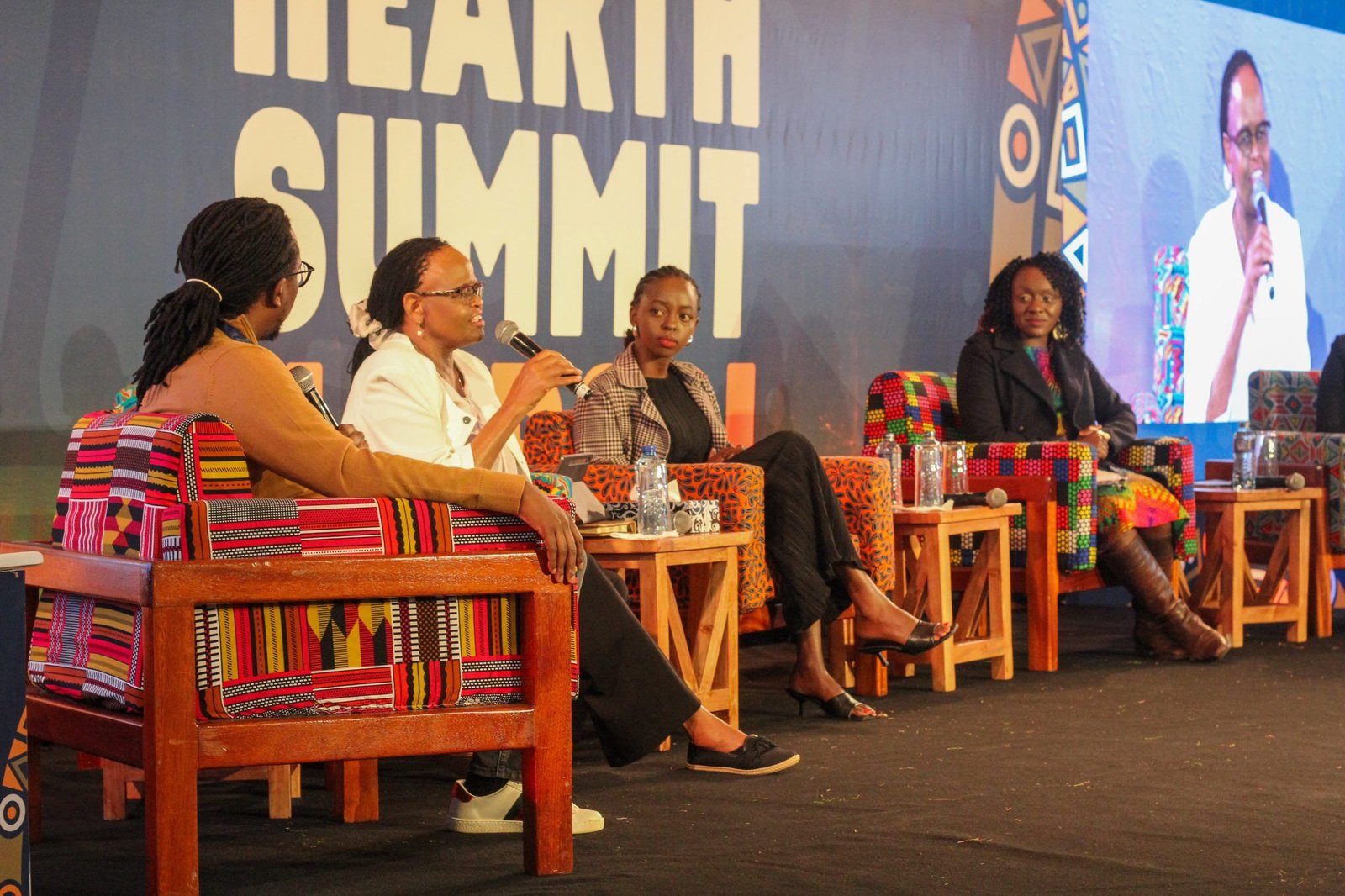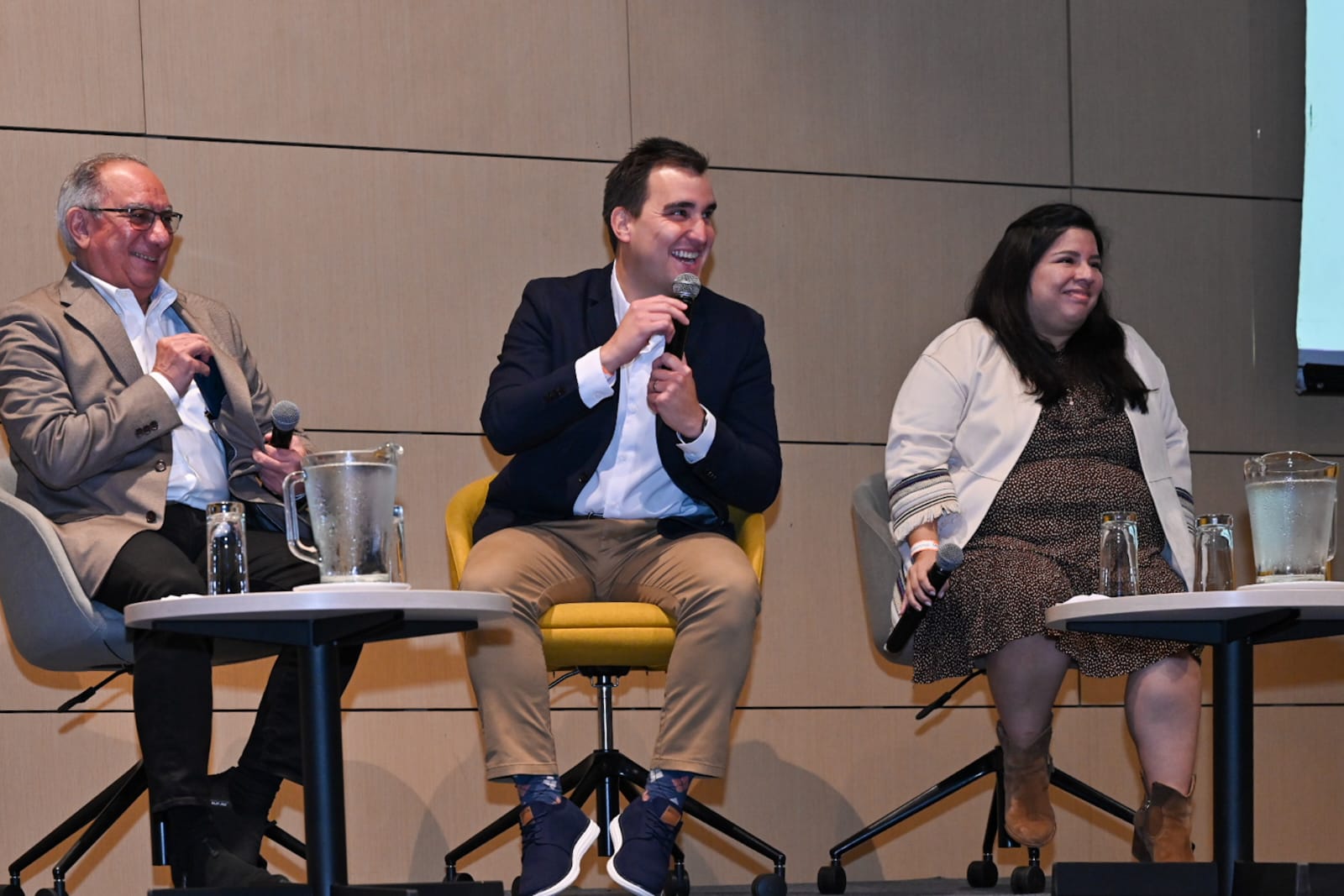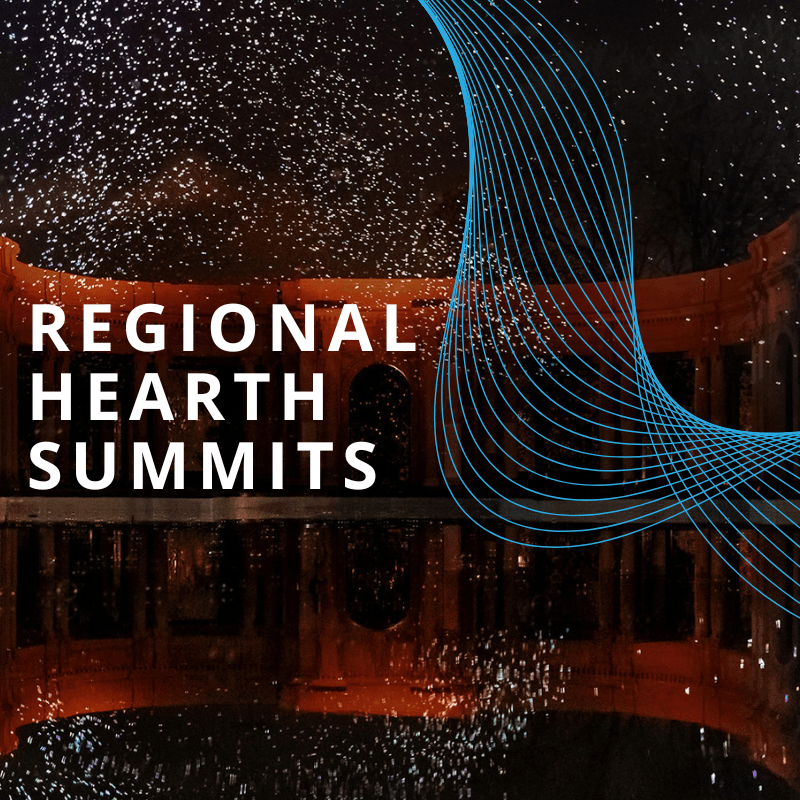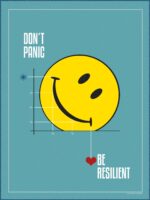A Deep Dive Into Hearth Summit Nairobi 2024A Deep Dive Into Hearth Summit Nairobi 2024
Stories from the Hearth
Reflections From:
The Axum Team
Organizers of Hearth Summit Nairobi 2024
🌍 Nairobi, Kenya

Quick Reads
- Axum hosted the first regional Hearth Summit in East Africa in Nairobi, Kenya, in July 2024.
- The Summit’s four main pillars — restorative justice, intergenerational wellbeing, ecological belonging, and faith and wellbeing — guided insightful discussions on integral aspects of societal wellbeing.
- The Summit embraced an embodied and uniquely Kenyan approach to wellbeing with diverse arts experiences, wellbeing practices, and celebrations of Kenyan culture throughout the event.
- The main takeaways from the Summit centered around the need for driving systemic change using homegrown solutions: for Africa, by Africa!
The Axum and The Wellbeing Project teams gather after a successful first Hearth Summit in Nairobi.
In July, we partnered with The Wellbeing Project to host Hearth Summit Nairobi, the first regional Hearth Summit in East Africa.
The two-day Summit hosted over 300 changemakers from diverse cultures, backgrounds, and fields to explore the intersection of wellbeing and social change. The Summit was thoughtfully crafted to ignite engaging discussions and interactive experiences centered on pillars crucial to our societal wellbeing: restorative justice, intergenerational trauma, ecological belonging, and faith and wellbeing. Within these pillars, participants explored themes that included movements of change and community organizing, wellbeing in the workplace, wellbeing and parenting, sports and wellbeing, among others.
Beyond the breakout sessions, the Summit also offered immersive and interactive art experiences designed to allow participants to explore the concept of wellbeing. These experiences included dance, flower arrangements, and biokinesthetics. Additionally, participants engaged with immersive art such as spoken word and stage readings, musical performances, dances, paintings, tapestries, and a live caricature setup.
For its look and feel, the Summit embraced an Afrocentric aesthetic to cultivate a strong local community atmosphere within our environment. This included using furniture adorned with traditional Kenyan cloth prints and vibrant, patterned banner graphics. The team aimed to create a Summit experience that felt as anti-conference as possible. We wanted our guests to step outside the typical hotel conference room setting, immerse themselves in nature, and participate in physical activities.
Catch a glimpse of the Summit here in this short video:
The four panel sessions touched on the following The four panel sessions touched on the following

Restorative Justice
This panel was co-chaired by Edwin Macharia, Co-Founder and Managing Partner at Axum, and Chief Justice Martha Koome, a prominent legal authority with over 30 years of experience in criminal, land, and welfare issues in Kenya. The panel explored justice as a shared responsibility and lived experience, requiring empowered individuals, accessible courts, and support for the marginalized. Critical issues discussed included addressing the overrepresentation of people with disabilities in prisons, reducing stigma, and decolonizing the justice system to promote restorative justice.
Her Ladyship Chief Justice Martha Koome speaks at Hearth Summit Nairobi with Waizeh Solonka, AJAR Trust, and Felicia Mburu, Article 48.
Ecological Belonging
The panel was chaired by Wanjira Mathai, MD, Africa & Global Partnerships at the World Resource Institute (in absentia), who unfortunately could not attend the summit. Our very own Fridah Kiboori moderated it, and it explored the deep connection that individuals and communities have with their natural and built environments. The session explored the profound interdependence between humans and nature, recognizing that our wellness and identity are deeply rooted in the health of our ecosystems and spaces.

Faith and Wellbeing
This panel was moderated by Archbishop Anthony Muheria of the Archdiocese of Nyeri, one of the co-chairs. The session explored faith as a lifelong journey of questioning our formal or informal beliefs and recognizing that our collective consciousness and actions unite us. Within formal religion, the panel discussed the common challenge of reconciling it with the perception of religion as oppressive.
Archbishop Anthony Muheria of the Archdiocese of Nyeri speaks at Hearth Summit Nairobi.

Intergenerational Wellbeing
Chaired and moderated by Edwin Macharia, this panel explored how individuals, families, and communities are interconnected and shape our collective ecosystem. The session explored how traditional methods can address community trauma and bridge generational gaps by preserving cultural knowledge and fostering overall wellbeing.
Sam Mugacha, Imaginable Futures, speaks on the intergerational wellbeing panel with Julie Gichuru, Mastercard Foundation, and peace practitioner Tecla Namachanja.
These were our key takeaways based on overarching themes from the Summit:
The significance of decolonizing our political, religious, and social structures to dismantle narratives of inequality and create systems that support collective wellbeing.
The power of intentionally and collectively identifying traumas and unlearning unhealthy habits, especially from an intergenerational perspective.
The need to remove economic, social, and infrastructural barriers to wellbeing initiatives and ensure accessible and inclusive resources for all.
For Africa by Africa. Homegrown solutions work, and we have what it takes to solve Africa’s challenges.
We left the Summit feeling reinvigorated by the insightful conversations and the deep spirit of community. We’re excited to continue the dialogue around the wellbeing movement in Kenya and look forward to championing a pan-African effort to bring the movement to the rest of the continent!
EXPLORE THE REGIONAL SUMMITS FURTHEREXPLORE THE REGIONAL SUMMITS FURTHER
Dive Into Stories From Around the World
Discover the Wellbeing Movement in AfricaDiscover the Wellbeing Movement in Africa
Meet and hear stories from the changemakers championing the wellbeing movement in Africa.
Cómo el Bienestar Organizacional Inspira el Desempeño: Lecciones del Sector de Cambio Social Cómo el Bienestar Organizacional Inspira el Desempeño: Lecciones del Sector de Cambio Social
Stories from the Hearth
Publicación invitada de:
Ricardo Paz
People & Culture Elder, The Wellbeing Project
🌍 Bogotá, Colombia

Lectura rápida
-
The Wellbeing Project, junto con ocho organizaciones de todo el mundo, el Instituto Tavistock y el Center for Healthy Minds estuvieron cinco años investigando el valor del bienestar organizacional y cómo fomentarlo.
-
Aprendieron que cualquier organización, pública o privada, puede beneficiarse de promover el bienestar organizacional: mejora el desempeño de los empleados, lo que se traduce en un mejor desempeño organizacional.
-
Además, todos estuvieron de acuerdo en que era menos costoso invertir en el bienestar organizacional que no hacerlo.
-
Cultivar el bienestar organizacional es un proceso continuo, dinámico y de largo plazo, pero el valor agregado para los empleados, su organización y su comunidad vale la pena.
Ricardo (izquierda) habla en Hearth Summit Bogotá, compartiendo los hallazgos del Programa Exploratorio Organizacional (OEP) de The Wellbeing Project.
En mayo, tuve el placer de presentar en el Hearth Summit Bogotá, que se centró en el bienestar y los negocios sostenibles. En este evento, la sostenibilidad se exploró de tres maneras:
Trabajo sostenible: centrado en el bienestar de los empleados y el balance vida-trabajo
Negocio sostenible: centrado en la producción y el consumo sostenibles dentro de las empresas
Ecosistemas sostenibles: centrándose en cómo las empresas pueden tener impactos sociales y medioambientales positivos
La audiencia estaba formada por cientos de líderes del sector empresarial: directores ejecutivos, gerentes, expertos y otros se unieron en el Hearth Summit para tomar medidas colectivas y cambiar la cultura corporativa hacia una de bienestar y desempeño.
Me sentí agradecido de compartir los aprendizajes del sector social sobre cómo al promover el bienestar dentro de las organizaciones se conduce a un mayor desempeño.
No soy el único que piensa en la importancia del bienestar de los empleados: la Organización Mundial de la Salud ha clasificado el burnout como un problema de salud ocupacional dada la magnitud de casos presentados. Múltiples estudios en todo el mundo muestran un aumento del burnout en organizaciones de todo tipo. Gallup ha estimado las pérdidas globales por ausentismo, rotación y agotamiento en 322.000 millones de dólares. ¡Mil millones!
La situación es clara: las organizaciones deben centrar su atención en el bienestar de sus empleados. Pero ¿cómo pueden hacer esto?
En el Hearth Summit Bogotá, compartí los aprendizajes de un Programa Exploratorio Organizacional (OEP, por sus siglas en inglés) de cinco años que The Wellbeing Project cocreó con ocho organizaciones de todo el mundo: de Brasil, Canadá, China, Egipto, Mozambique, Pakistán, Senegal y Estados Unidos.
Con el Instituto Tavistock de Relaciones Humanas y el Centro para Mentes Saludables proporcionando apoyo en investigación y metodología, buscamos trabajar con estas ocho organizaciones para desarrollar un marco efectivo para apoyar el bienestar organizacional de manera participativa, basado en evidencia empírica.
Los aprendizajes de estas ocho organizaciones sociales pueden ser útiles para organizaciones de otros sectores, tanto públicos como privados, ya que comparten un mensaje común: el bienestar de los empleados de cualquier organización lleva a un mejor desempeño y, por lo tanto, a un mejor desempeño de las organizaciones y del ecosistema que las rodea. En resumen: el bienestar inspira el desempeño.
Pero ¿cómo pueden las organizaciones crear una cultura de bienestar? Compartí tres aprendizajes clave de OEP con agentes de cambio en Bogotá:
1. Crea tu propia definición y visión de bienestar.
La definición de bienestar organizacional puede ser muy diferente para una organización que para otra, así como a nivel individual. Por esta razón, es relevante hacer una definición de manera participativa con todos o la mayoría de los involucrados. Esto significa que será un proceso lento, de largo plazo, con una visión estratégica, de acuerdo con los retos, objetivos y entorno de cada organización.
2. Dar pequeños pasos, llegarás lejos.
De esta forma, es necesario centrarse en unas primeras y pequeñas acciones para avanzar poco a poco en un plan de trabajo que evidencie avances y refuerce la evolución de la organización. La idea es que, a la hora de tomar decisiones estratégicas, se tengan en cuenta las necesidades de las personas involucradas en todos los niveles de la organización.
3. Encuentra el “camino del medio”.
A veces, una organización se centra únicamente en lograr su misión y objetivos. En el otro extremo, existe la posibilidad de estar demasiado centrado en el bienestar de las personas. Las organizaciones que están muy enfocadas en su misión a menudo tienen una alta rotación de personal, bajos niveles de compromiso, hipersensibilidad a la desadaptación organizacional y una alta frecuencia de casos con burnout. En el otro extremo, en aquellos demasiado enfocados en el bienestar de las personas, hay dificultad para lograr la misión de la organización, las necesidades individuales están constantemente insatisfechas, sus responsabilidades no están claras y su energía se consume en tareas innecesarias.
Una tercera vía, una vía intermedia, se compone de un entorno en el que las personas están inspiradas por la misión y la estructura de la organización, se identifican claramente sus habilidades y competencias individuales, se tienen claras las responsabilidades de sus funciones y se les reconoce por sus contribuciones profesionales.
La conclusión
A través de la investigación de OEP, aprendimos que generar la capacidad de bienestar organizacional es un proceso de gestión del cambio de cuatro pasos:
Definición de objetivos,
Cocreándolos con todos los miembros,
Implementación, y
Aprendizaje constante.
Es un proceso lento, sin soluciones rápidas ni un enfoque lineal. Lo más importante es la dirección de los cambios más que los resultados inmediatos. Es importante que los líderes den el ejemplo también, y vimos tres factores fundamentales en la generación de esta capacidad de bienestar organizacional: Liderazgo, Comunicación y Mentalidad de Crecimiento.
¿Y la última pieza del rompecabezas? Estas ocho organizaciones sociales descubrieron que desarrollar su capacidad de bienestar organizacional era menos costoso que no hacerlo.
Como dijo uno de los participantes del Programa de Desarrollo Interior de The Wellbeing Project: “Si no tienes bienestar en tu personal, ¿cómo puedes proporcionar bienestar en tu comunidad? Nadie puede dar lo que no tiene”.
Lo mismo ocurre con su organización. Ya sea que trabajes en una organización sin fines de lucro, una empresa o cualquier otro tipo de organización, el mensaje puede ser el mismo:
El bienestar inspira el desempeño: si estamos bien, lo haremos mejor.
EXPLORE THE REGIONAL SUMMITS FURTHEREXPLORE THE REGIONAL SUMMITS FURTHER
Dive Into Stories From Around the World
Discover Organizational WellbeingDiscover Organizational Wellbeing
Meet and hear stories from the changemakers championing wellbeing in their organizations.

Quick Reads
- The Wellbeing Project, along with eight organizations from around the world, the Tavistock Institute, and the Center for Healthy Minds spent five years researching the value of organizational wellbeing and how to foster it.
- They learned that any organization, public or private, can benefit from promoting organizational wellbeing: it improves employee performance, which translates into improved organizational performance.
- They also all agreed the approach was cost-beneficial: it was less expensive to invest in organizational wellbeing than otherwise.
- Cultivating organizational wellbeing is an ongoing, dynamic, and long-term process — but the value added for employees, your organization, and your community are worth it.
Ricardo (left) speaks at Hearth Summit Bogotá, sharing findings from The Wellbeing Project’s Organizational Exploratory Program (OEP).
In May, I had the pleasure of speaking at the Hearth Summit Bogotá, which focused on wellbeing and sustainable business. At this summit, sustainability was explored in three ways:
Sustainable work: focusing on employee wellbeing and work-life balance
Sustainable business: focusing on sustainable production and consumption within businesses
Sustainable ecosystems: focusing on how businesses can have positive social and environmental impacts
The audience was filled with hundreds of leaders from the business sector: CEOs, managers, experts, and others joined together at the Hearth to take collective action and shift corporate culture towards one of wellbeing and welldoing.
I was grateful to share learnings from the social sector about how promoting wellbeing within organizations leads to greater welldoing.
I’m not the only one thinking about the importance of employee wellbeing: the World Health Organization has classified Extreme Burnout as an occupational health problem given the magnitude of cases presented. Multiple studies around the world show an increase in extreme burnout in organizations of all kinds. Gallup has estimated global losses from absenteeism, turnover, and burnout at $322 billion. Billion!
The situation is clear: organizations must turn their attention to the wellbeing of their employees. But how can they do this?
At Hearth Summit Bogotá, I shared learnings from a five-year Organizational Exploratory Program (OEP) that The Wellbeing Project co-created with eight organizations from around the world – from Brazil, Canada, China, Eygpt, Mozambique, Pakistan, Senegal, and the United States.
With the Tavistock Institute of Human Relations and the Center for Healthy Minds providing research and methodology support, we sought to work with these eight organizations to develop an effective framework to support organizational wellbeing in a participatory way, based on empirical evidence.
The learnings from these eight social organizations can be useful for organizations in other sectors, both public and private, as they share a common message: the wellbeing of the employees of any organization leads to their improved performance and, therefore, the improved performance of the organizations and the ecosystem that surrounds them. In short: wellbeing inspires welldoing.
But how can organizations create a culture of wellbeing? I shared three key learnings from OEP with changemakers in Bogota:
1. Create your own definition and vision of wellbeing.
Defining organizational wellbeing can be very different for one organization than for another, as well as at the individual level. For this reason, it is relevant to make a definition in a participatory way with all or most of those involved. This means it will be a slow, long-term process, with a long-term strategic vision, according to the challenges, objectives and environment of each organization.
2. Take small steps – they go far.
In this way, it is necessary to focus on a few first and small actions to advance little by little in a work plan that evidences progress and reinforces the evolution of the organization. The idea is that, when making strategic decisions, the needs of the people involved at all levels in the organization are considered.
3. Find the “middle way”.
Sometimes, an organization is focused solely on achieving its mission and goals. At the other extreme, there is the possibility of being too focused on people’s well-being. Organizations that are very focused on their mission often have high staff turnover, low levels of commitment, hypersensitivity to organizational maladjustment, and a high frequency of cases with extreme burnout. At the other extreme, in those too focused on people’s wellbeing, there is difficulty in achieving the organization’s mission, individual needs are constantly unsatisfied, their responsibilities are unclear and their energy is consumed in unnecessary tasks.
A third way, a middle way, is made up of an environment where people are guided by the mission and structure of the organization, their individual skills and competencies are clearly identified, the responsibilities of their roles are clear, and they are recognized for their professional contributions.
The Bottom Line
Through the OEP research, we learned that generating organizational wellbeing capacity is a four-step change management process:
Defining objectives,
Co-creating them with all members,
Implementing, and
And constantly learning.
It is a slow process, without quick solutions or a linear approach. What is most important is the direction of changes rather than the immediate results. Leadership by example is also important, and we saw three fundamental factors in generating organizational wellbeing capacity: Leadership, Communication and Growth Mindset.
And the final piece of the puzzle? These eight social organizations found that developing their wellbeing capacity was less expensive than not doing so.
As one of the participants of The Wellbeing Project’s Inner Development Program said, “If you don’t have wellbeing in your staff, how can you provide wellbeing in your community? No one can give what they don’t have.”
The same is true for your organization. Whether you work in a non-profit, a business, or any other type of organization, the message can be the same:
Wellbeing Inspires Welldoing: if we are well, we’ll do it better.
EXPLORE THE REGIONAL SUMMITS FURTHEREXPLORE THE REGIONAL SUMMITS FURTHER
Dive Into Stories From Around the World
Discover Organizational WellbeingDiscover Organizational Wellbeing
Meet and hear stories from the changemakers championing wellbeing in their organizations.
Empowering Kenyans Through Justice: Chief Justice Martha Koome on Wellbeing in Kenya Empowering Kenyans Through Justice: Chief Justice Martha Koome on Wellbeing in Kenya
Stories from the Hearth
Reflections from:
Her Ladyship Chief Justice Martha Koome
Chief Justice of the Supreme Court of Kenya
🌍 Nairobi, Kenya
Her Ladyship Martha K. Koome assumed office as Chief Justice and the President of the Supreme Court of Kenya on May 21, 2021.
Prior to her appointment as the 15th Chief Justice of the Republic of Kenya, she was a Senior Judge of the Court of Appeal. During her stint as an Appellate Judge, she headed the Criminal Division of the Court and in addition, chaired Committees which developed the Court of Appeal Practice Directions in Civil and Criminal Appeals as well as the Registry Manual that standardized the registry experience at the Court.
At Hearth Summit Nairobi, the Chief Justice was chair of the pillar on restorative justice, providing deep insights on the role of formal and informal justice in societal wellbeing. She also spoke about the need to support the wellbeing of actors in the judicial system, like judges.
Read her reflections below, originally published on her blog, and watch her exclusive interview with The Star Kenya.
“I have the immense honour to co-host the Hearth Summit Nairobi, 2024 alongside Archbishop Anthony Muheria, Archbishop of Nyeri, Kenya, Wanjira Mathai, Managing Director, Africa and Global Partnerships, World Resources Institute and Edwin Macharia, Partner, Axum Kenya; The Wellbeing Project’s Advisory Board.
The Hearth Summit, hosted by local communities of changemakers, advances a hopeful vision of individual, collective and ecological wellbeing for all – catalyzing a culture of wellbeing for changemakers and in changemaking everywhere.
At this critical moment in our country and planet, wellbeing in all aspects remains core to our survival. At the Judiciary, we are focused on nurturing restorative justice which will heal the justice system by reshaping it through the lens of our innate, empowering age-old reconciliatory systems.
We are deliberately deploying green justice to ease remand and prison congestion and encouraging parliament to review our penal laws in alignment with the Constitution and post-independence state.
By investing in alternative justice systems, we acknowledge that justice is not only found in the formal court system but in homes, communities, places of worship and markets hence the need to have multiple ways of resolving disputes.
We will continue to nurture cohesion through justice and to find uplifting homegrown ways to ensure that the justice system holds safe and sacred the fabric of our society. As we protect the wellbeing of our nation, we also seek your support to nurture and protect the wellbeing of our exceptional judges, judicial officers and staff.
It is not the structure of the systems we build that guard our humanity, it is the humanness of those systems that make our lives dignified and worthy.”
EXPLORE THE REGIONAL SUMMITS FURTHEREXPLORE THE REGIONAL SUMMITS FURTHER
Dive Into Stories From Around the World
Discover the Wellbeing Movement in AfricaDiscover the Wellbeing Movement in Africa
Meet and hear stories from the changemakers championing the wellbeing movement in Africa.

Teaching, Learning, and Co-Creating Teaching, Learning, and Co-Creating
The Science of Wellbeing x Regional Hearth Summits
UNDERSTANDING WELLBEINGUNDERSTANDING WELLBEING
“Whoever teaches learns in the act of teaching, and whoever learns teaches in the act of learning.”
Paulo Freire

COMPASSION, ALTRUISM, AND ECONOMICS
WITH PROF. DR. TANIA SINGER
In Brussels, Prof. Dr. Tania Singer, a world expert on empathy and compassion, led changemakers on a journey from inner work to a more caring economy by explaining how motivation psychology and neurobiology can inform economic models. In fostering pro-social behaviour, she explained, we can enable the impactful collaboration needed to solve our world’s biggest problems, such as climate change, social injustice, and economic inequality. The research offers decision- and policy-makers a new look at how the individual and the collective interact in order to create more sustainable macro-economic environments.

EMOTIONS, HEALING, AND PEACEBUILDING
WITH DR. OLGA KLIMECKI
In Brussels, Dr. Olga Klimecki (pictured above right), Senior Researcher at the University of Geneva, spoke on two panels to bring a neuroscience perspective to conversations on healing and peacebuilding. Citing a new research project from the Swiss Center for Affective Sciences, she explained the growing understanding of the role emotions play in conflict resolution. Through a mix of behavioural and neuroscientific experiments with field studies in conflict areas, the work seeks to aid and inform peacebuilding and diplomacy efforts.

HEALTHY MINDS AND WELLBEING
WITH DR. RICHARD J. DAVIDSON
In Bogotá, Dr. Richard J. Davidson from the Center for Healthy Minds at the University of Wisconsin-Madison shared his pioneering research on the neural bases of emotion and emotional style and how they relate to inner and organizational wellbeing. His work explores how brain function is related to wellbeing and mental health, particularly through the study of contemplative practices such as meditation. Through neuroimaging and behavioural techniques, his research captures the neuroplastic changes that occur and thereby enhance emotional resilience, reduce stress, and promote positive health outcomes.
Neuroscientific Dimensions of Wellbeing
SESSION AT Hearth Summit São Paulo
In São Paulo, Dr. Raquel Tatar, Chief Scientific Officer and Chief Operating Officer, Center for Healthy Minds, shared the dimensions of wellbeing as seen through a neuroscientific lens. Take a deep dive into how the brain works and influences wellbeing, as well as the emerging Healthy Minds Framework. Watch the session (in Portuguese).


ARTS AS THERAPY
WITH ALESSANE SECK
In Dakar-Thiès, art therapist Alassane Seck shared learnings from Fann Hospital, where the Moussa Diop psychiatric clinic is home to Senegal’s first arts therapy programme. Alassane opened the L’Atelier d’EXpression (“The Expression Workshop”) in 1999 aiming to provide holistic care to the clinic’s patients. Engaging with the arts can help alleviate symptoms of many psychiatric disorders such as depression and anxiety, schizophrenia, cognitive impairment and dementia, and autism, in an alternative, non-pharmaceutical approach.
In the specific case of L’Atelier d’EXpression, Alessane explained that only does the programme help patients self-reflect, understand their emotions, express themselves, it also helps shift cultural attitudes towards mental illness in Senegalese society. The participants’ art creations are also often exhibited in various forums and exhibitions, including the regional summit hosted by Tostan, promoting social inclusion and empathy while sharing the story of mental health with wider audiences.

NUTRITIONAL SCIENCES
WITH RUBAIYA AHMAD
In Dhaka, animal welfare activist and educator Rubaiya Ahmad led a workshop on nutritional sciences for changemakers, explaining the physiological relationship between diet and mental health. Conversations about inner wellbeing are incomplete without considering one’s physical wellbeing, she said, as she covered topics such as nutrition, physical exercise, and emotional relationships with food.
As the founder of Bangladesh’s first vegan eatery, The Bangu Vegan, she also shared the human and environmental benefits of eating plant-based foods. She also explained the cultural relevance of plant-based diets in Bangladesh, noting the presence of vegan and vegetarian elements in many authentic Bengali dishes.

SOCIO-EMOTIONAL LEARNING
WITH BRAC INSTITUTE FOR EDUCATIONAL DEVELOPMENT
In Dhaka, a team from BRAC Institute for Educational Development (BRAC IED) introduced changemakers of all ages to Socio-Emotional Learning (SEL). In the hybrid session mixing instruction and interactive play, participants learned the basics of SEL and how its five core competencies — self-awareness, self-management, social awareness, relationship skills, and responsible decision-making — relate to fostering wellbeing individually, collectively, and in the workplace. Through games and reflective conversations, the session also looked at how these competencies are taught, exercised, and perceived in Bangladeshi culture.












































